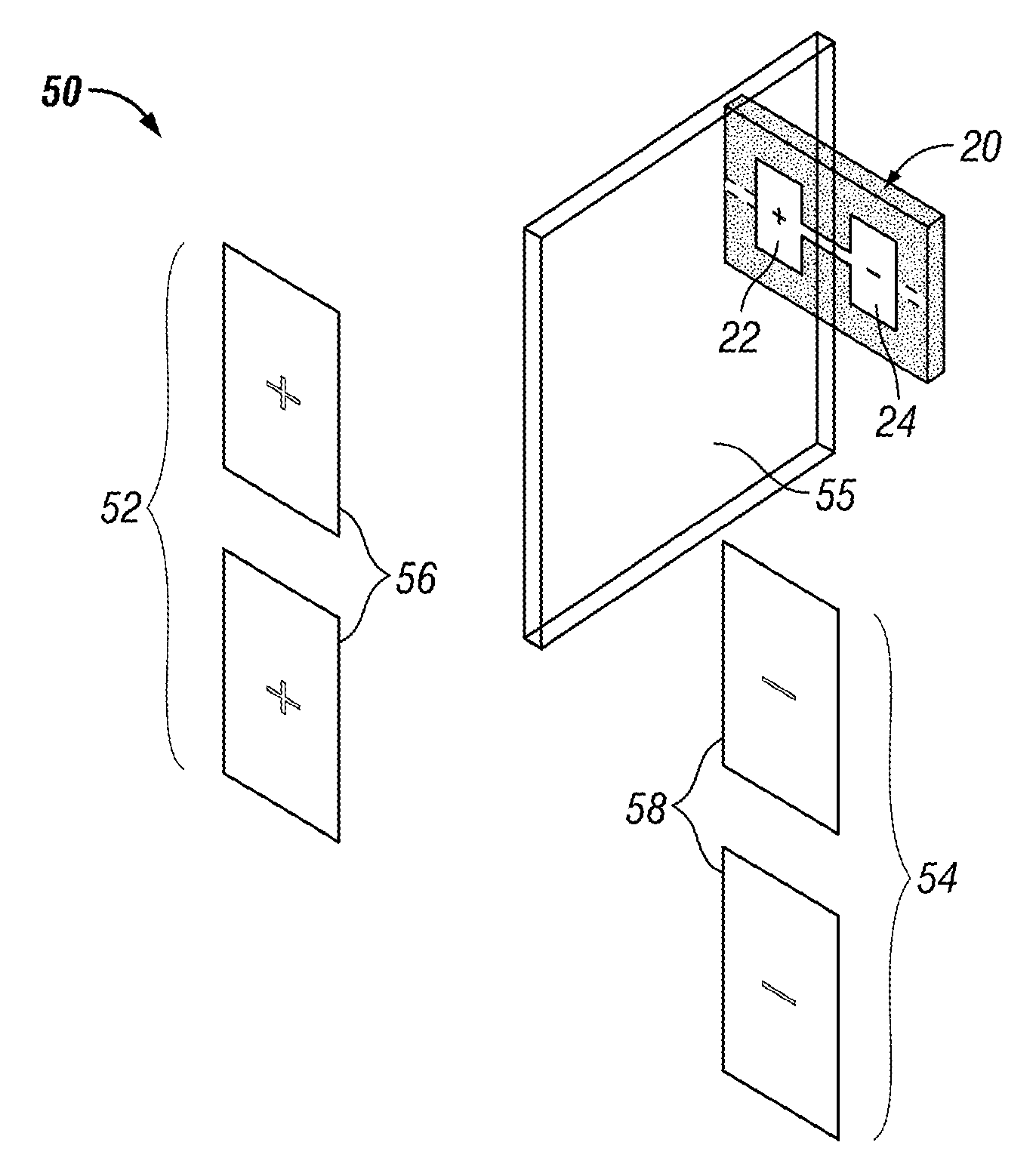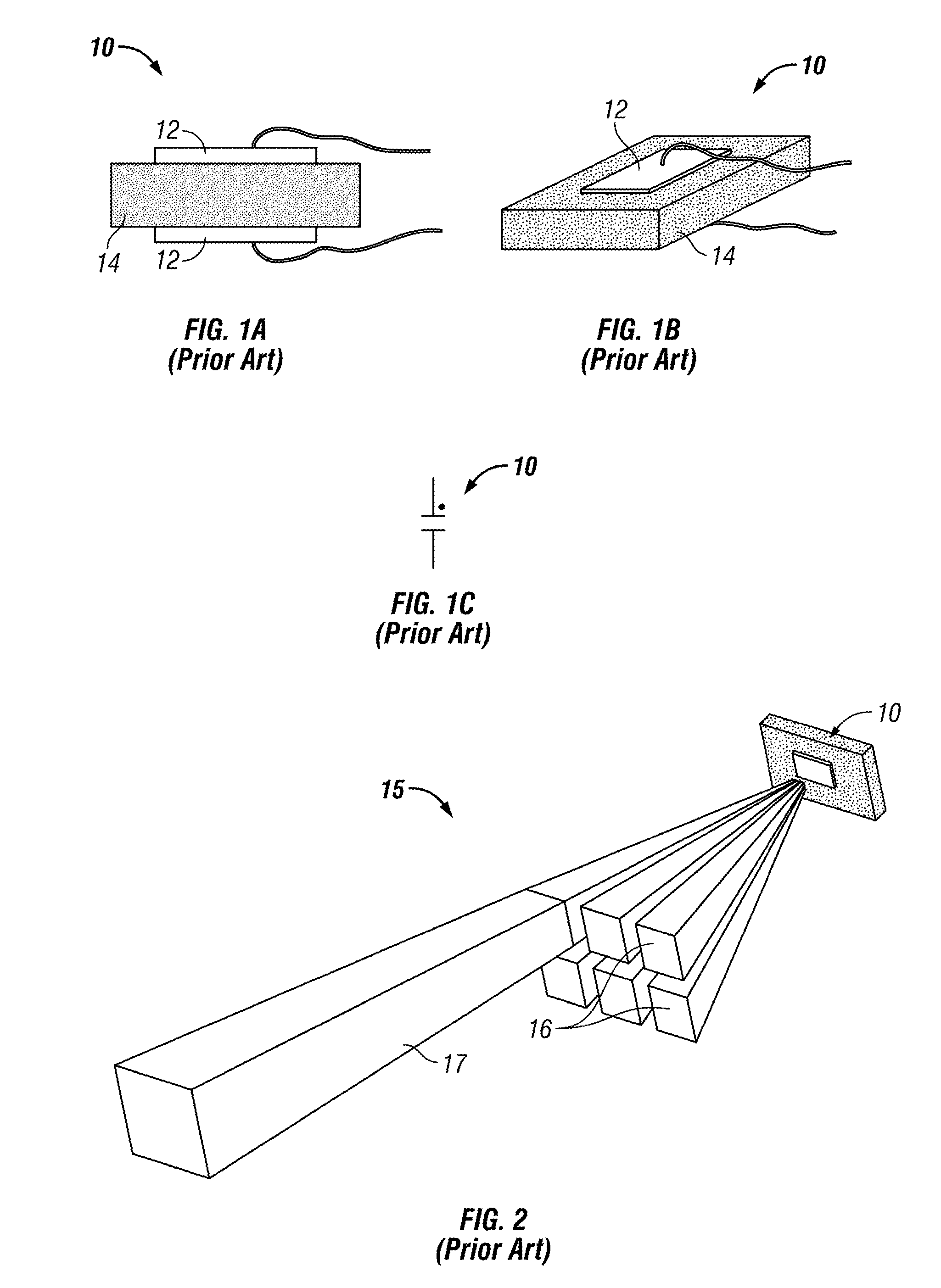Infrared motion sensor
a motion sensor and infrared technology, applied in the field of infrared motion sensors, can solve the problems of detectors emitted, false motion sensing, and limits on the monitored-volume design, and achieve the effect of reducing the cost of lens-based ir sensors and reducing the generated signal
- Summary
- Abstract
- Description
- Claims
- Application Information
AI Technical Summary
Benefits of technology
Problems solved by technology
Method used
Image
Examples
Embodiment Construction
[0040]Certain embodiments as disclosed herein provide for a PIR curtain motion sensor system in which a dual-element IR detector with opposite polarity detector elements has separate, independently oriented lenses or optical elements associated with the respective detector elements, where each lens can be angled individually relative to the respective detector element so as to control the spacing between the monitored volumes and thus the width of the “curtain” or set of monitored volumes, without varying the spacing between the respective lenses and the detector elements.
[0041]After reading this description, it will become apparent to one skilled in the art how to implement the invention in various alternative embodiments and alternative applications. However, although various embodiments of the present invention will be described herein, it is understood that these embodiments are presented by way of example only, and not limitation. As such, this detailed description of various a...
PUM
 Login to View More
Login to View More Abstract
Description
Claims
Application Information
 Login to View More
Login to View More - R&D
- Intellectual Property
- Life Sciences
- Materials
- Tech Scout
- Unparalleled Data Quality
- Higher Quality Content
- 60% Fewer Hallucinations
Browse by: Latest US Patents, China's latest patents, Technical Efficacy Thesaurus, Application Domain, Technology Topic, Popular Technical Reports.
© 2025 PatSnap. All rights reserved.Legal|Privacy policy|Modern Slavery Act Transparency Statement|Sitemap|About US| Contact US: help@patsnap.com



